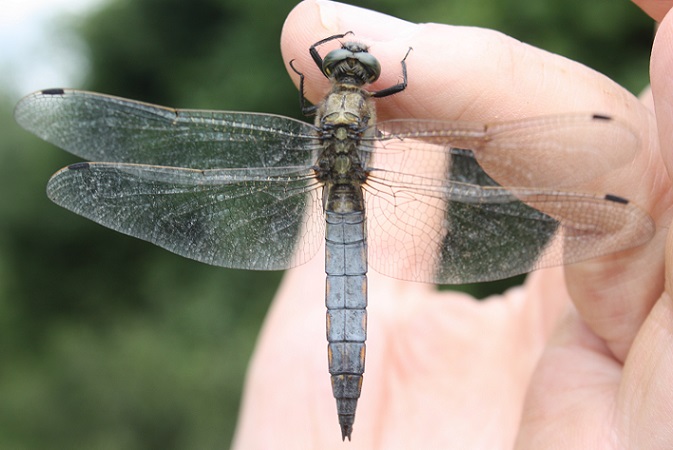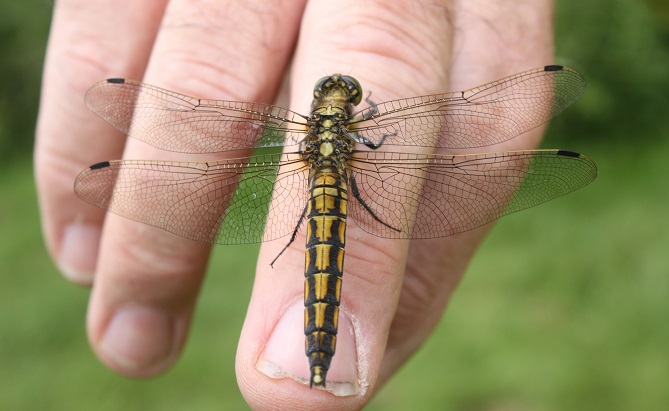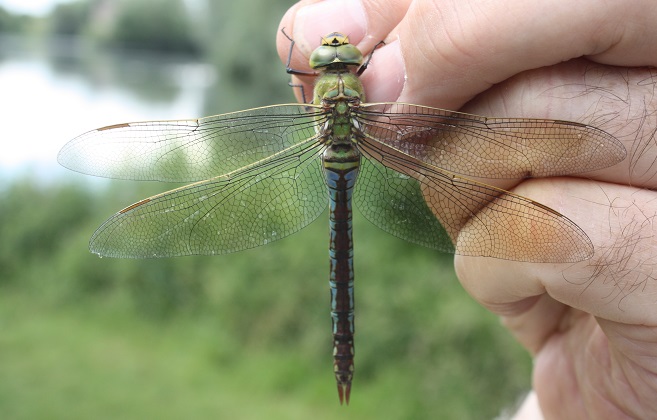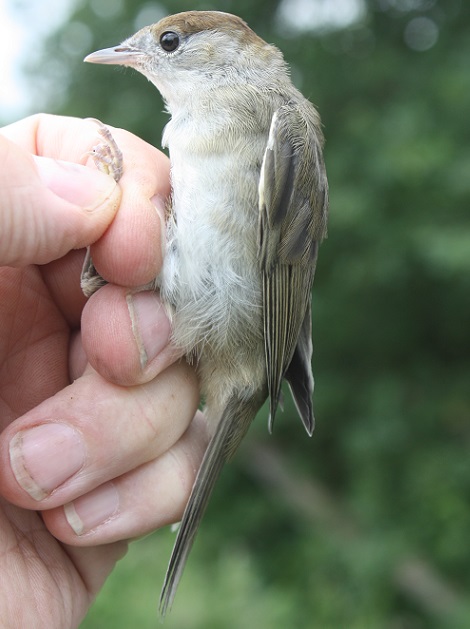Every year the Wiltshire Wildlife Trust hold a Bio-Blitz at one of their nature reserves, bringing people and their families into touch with all aspects of the wildlife (flora and fauna) on the chosen reserve. Last year it was at Blakehill Farm, this year it was at the Lower Moor Farm complex (Lower Moor, Sandpool and Clattinger Farms). I was joined for the session by Annie Hatt. Annie came to one of my ringing demonstrations at Ravensroost and decided that she would like to find out more about it, so today she came along for a taste of what it is all about. Because the Bio-Blitz didn't officially start until 10:00 we didn't start too early: getting the nets open for about 8:30. As a result, we didn't catch a large number of birds, but we managed to have enough to show to the people who came through, and it gave me an opportunity to give Annie time to get used to handling the birds and do some ringing and processing of the birds. By far and away, my biggest challenge of the morning was extracting the numerous Black-tailed Skimmers and Emperor dragonflies that decided they would like to get tangled in my nets. Fortunately, I have developed a strategy for extracting them that helps them keep their heads: pushing them through the net rather than trying to pull them out (dragonfly heads have seriously thin necks to attach them to the thorax). It works well, except for the occasions when they have decided to try and eat the net. These were the main culprits:
Male & Female Black-tailed Skimmer:


Male Emperor:

The bird list for the day was: Blue Tit 1(1); Great Tit 1; Dunnock 1(1); Robin (2); Blackbird 1; Blackcap 3(1); Garden Warbler (1); Chiffchaff 1; Willow Warbler (2); Reed Bunting 1. Totals: 9 ringed from 7 species and 8 retrapped from 6 species, making a total of 17 birds processed from 10 species. The birding highlight of the day were the first juvenile Blackcaps of the year. Chatting to Robin Griffiths during the morning, he had noted his first family of Blackcaps during the week, so perhaps this is the start of the rush. What was clear was the unusually high number of fault bars on the tails, indicating just how difficult the early season breeding has been.

The wind got up at about noon, and dark clouds started rolling in, the nets were billowing too much for it to be safe for the birds, who had stopped finding the nets by then anyway, so we packed up and were away before the rain came in. ST/AH
